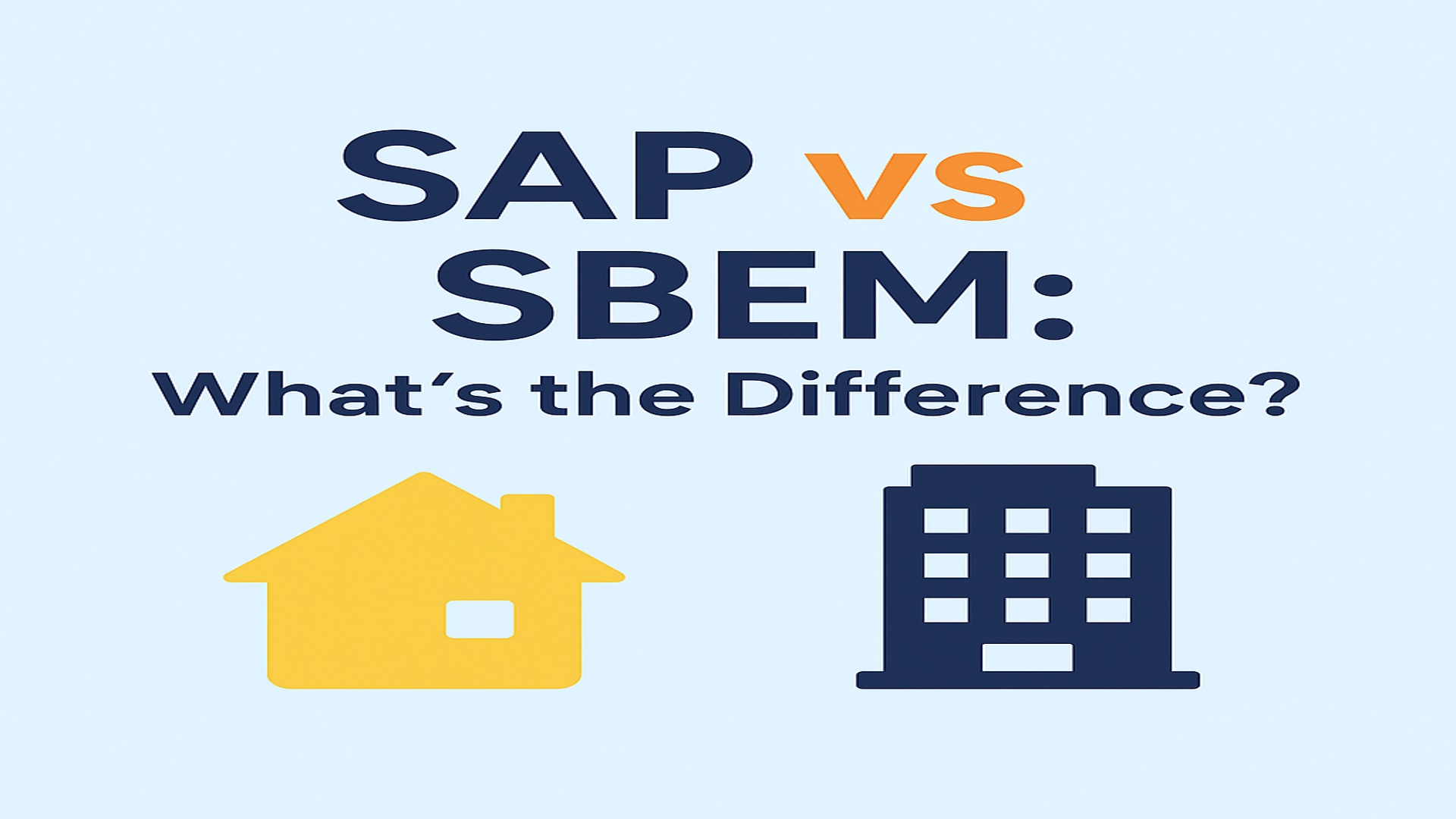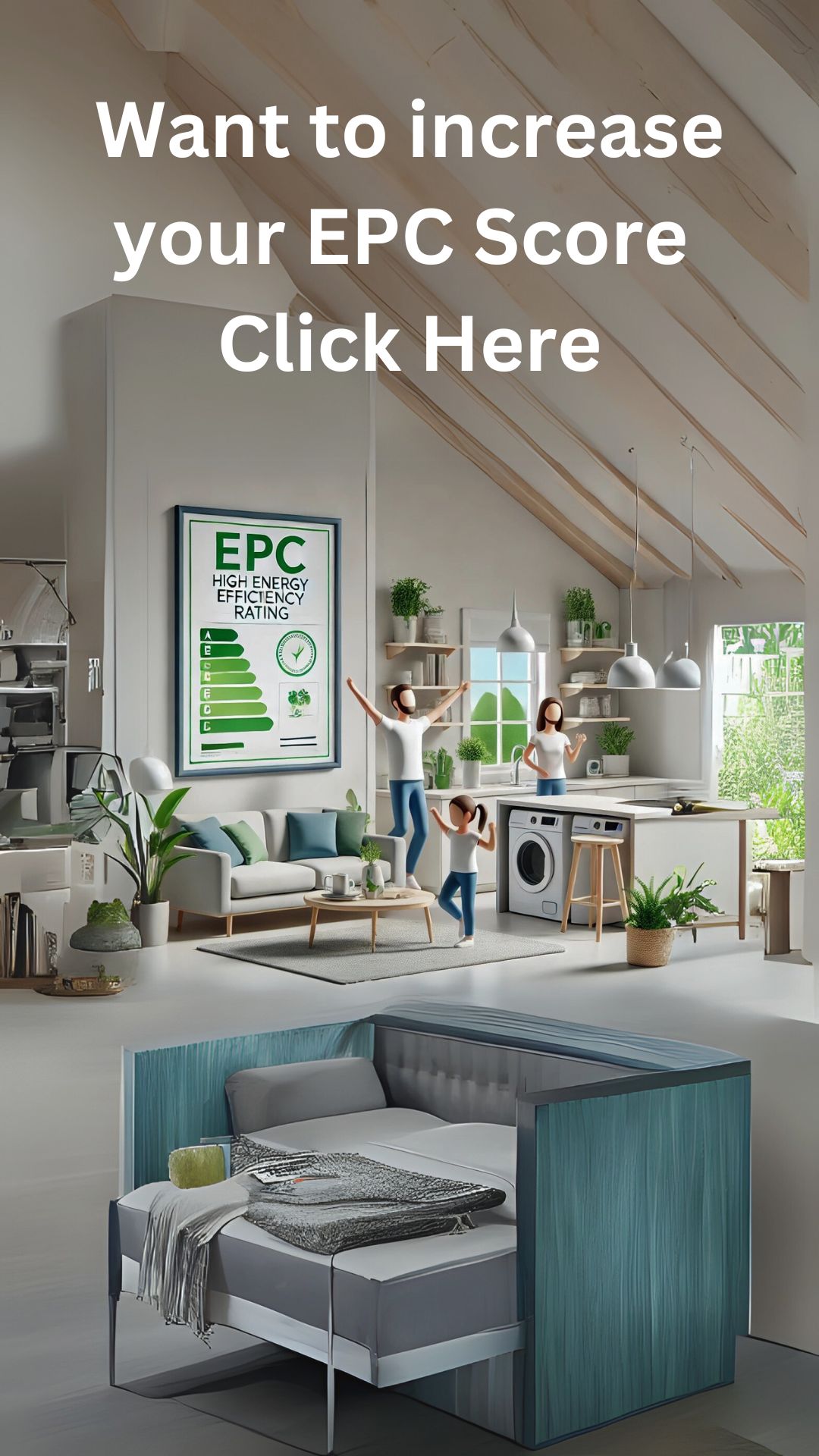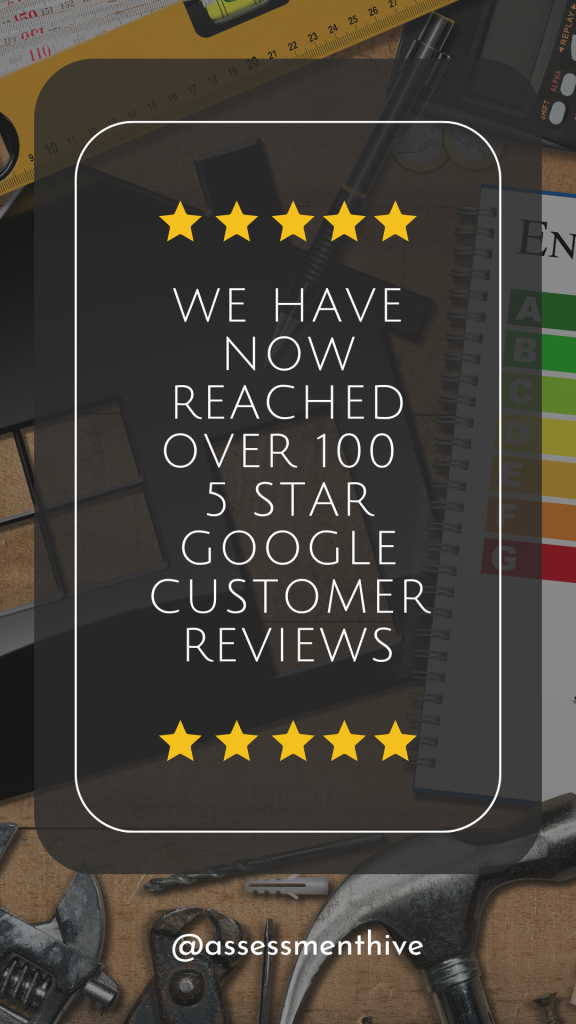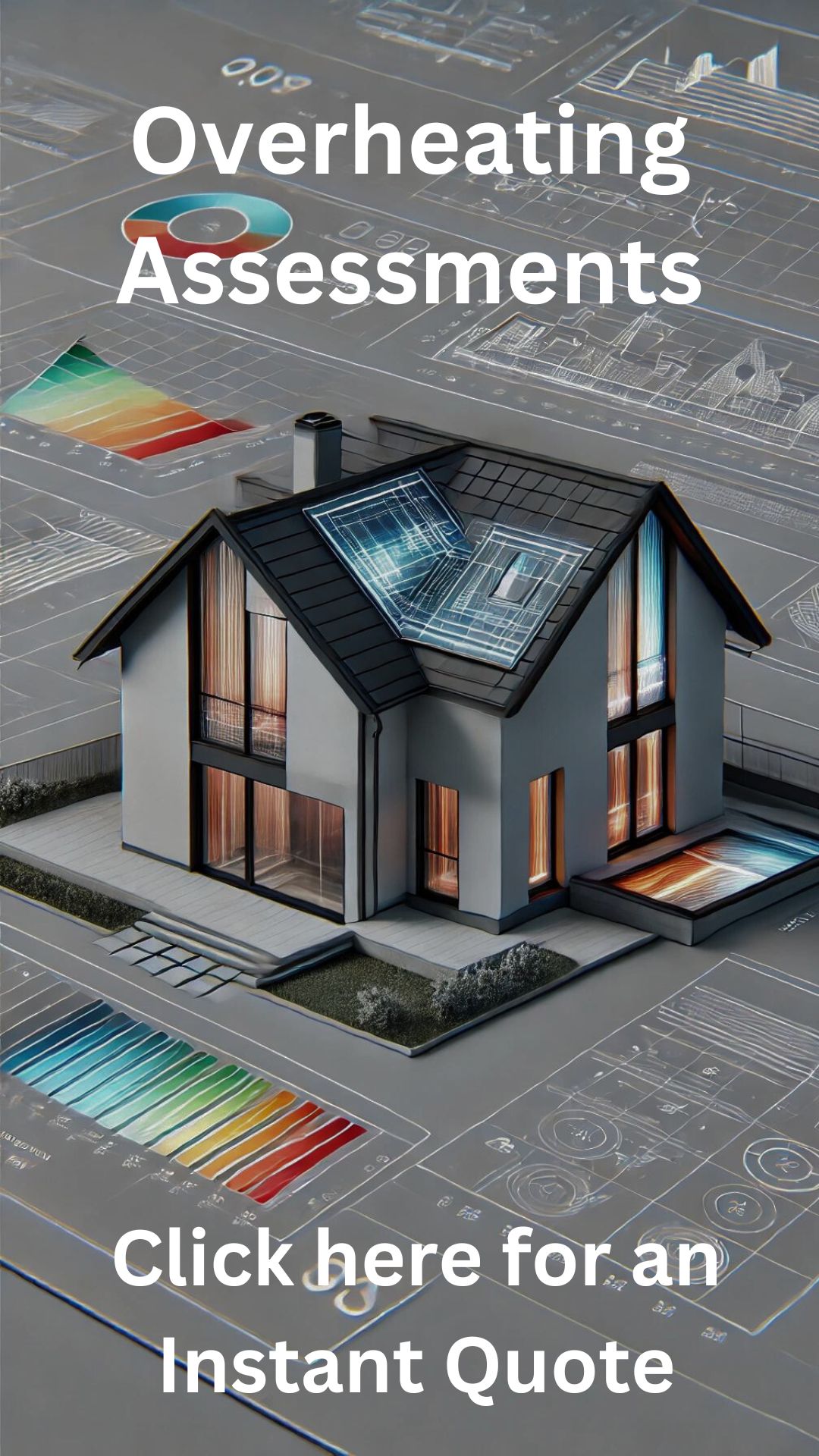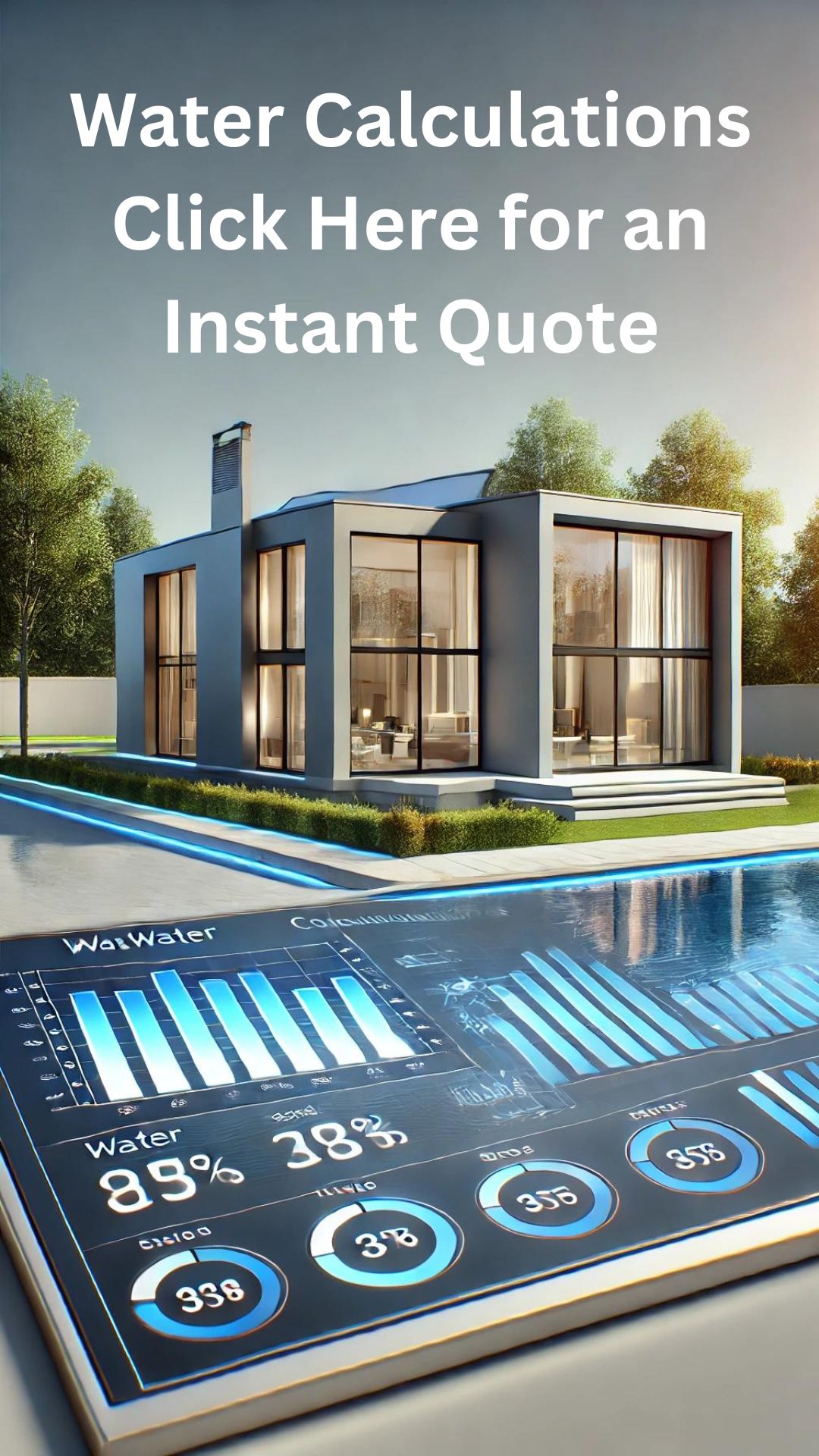🏠💼 SAP vs SBEM: What’s the Difference and Which One Do You Need?
🧭 Introduction
Whether you’re building a new home, converting a warehouse, or developing a commercial unit, understanding the difference between SAP and SBEM Calculations is key to compliance with Part L of the Building Regulations.
In this guide, we break down what SAP and SBEM are, how they differ, and which one your project needs. By the end, you’ll know exactly what to ask for—and when.
🏡 What Is SAP?
SAP stands for Standard Assessment Procedure. It is the UK government’s official methodology for calculating the energy performance of domestic dwellings.
You’ll need SAP Calculations if you’re working on:
-
New-build houses or flats
-
Property conversions into dwellings
-
Extensions that require Part L1 compliance
SAP assessments consider insulation, heating systems, ventilation, lighting, and energy demand. They’re used to generate a residential EPC (Energy Performance Certificate), which is legally required for selling or letting.
🏢 What Is SBEM?
SBEM stands for Simplified Building Energy Model. This method is used to calculate the energy performance of non-domestic buildings (e.g. offices, warehouses, retail units).
If you’re working on any kind of commercial or public-use building, you’ll need SBEM Calculations to show compliance with Part L2A or L2B of the Building Regulations.
SBEM assessments are used to:
-
Demonstrate compliance via a BRUKL report
-
Issue a non-domestic EPC
-
Identify how efficient your building is in terms of heating, cooling, lighting, and ventilation
⚖️ SAP vs SBEM: What’s the Difference?
Here’s a side-by-side comparison to make it clear:
| Feature | SAP (Standard Assessment Procedure) | SBEM (Simplified Building Energy Model) |
|---|---|---|
| Applies to | Residential buildings (dwellings) | Non-domestic/commercial buildings |
| Regulation | Part L1A / L1B | Part L2A / L2B |
| Produces | Residential EPC | BRUKL report + Non-domestic EPC |
| Common use cases | New houses, flats, extensions | Offices, retail, warehouses, public buildings |
| Software | SAP-specific tools (Elmhurst, Stroma) | SBEM software (iSBEM, DesignBuilder, etc.) |
📌 If your project is residential, you’ll need SAP. If it’s commercial, you’ll need SBEM.
🏗️ When Do You Need Each One?
Here’s how to tell which calculation applies:
🟨 Use SAP for:
-
New-build homes or flats
-
Barn conversions into dwellings
-
Residential extensions that impact energy performance
-
Self-contained residential units above shops or garages
👉 Learn more about SAP Calculations
🟧 Use SBEM for:
-
Offices, shops, or commercial units
-
Restaurants, gyms, or hotels
-
Schools, clinics, or public-use buildings
-
Refurbishments or fit-outs of existing commercial spaces
-
Large commercial extensions (> 50m²)
👉 Learn more about SBEM Calculations
🛠️ Can You Ever Need Both?
Yes — some mixed-use developments require both SAP and SBEM.
For example:
-
A new apartment building with retail space below
-
A converted barn that includes both a living space and a small office
In these cases, you’ll need:
-
SAP for the residential unit(s)
-
SBEM for the commercial/communal areas
Our team can handle both in one seamless service.
✅ Why Choosing the Right One Matters
Getting it right early means:
-
✅ Avoiding delays with Building Control
-
✅ Preventing redesigns late in the project
-
✅ Securing your EPC on time
-
✅ Complying with Approved Document L the first time
If you’re unsure which calculation your project needs, we’re happy to advise.
📞 Ready to Get Started?
At Assessment Hive, we specialise in SAP and SBEM Calculations for projects across the UK. We offer:
✔ Fast turnaround (24–48 hours)
✔ Competitive pricing
✔ Fully accredited assessments
✔ Friendly, expert guidance
📞 Call us on 020 7183 3240
📧 Email us at [email protected]
📝 Request Instant Quote → Click Here


